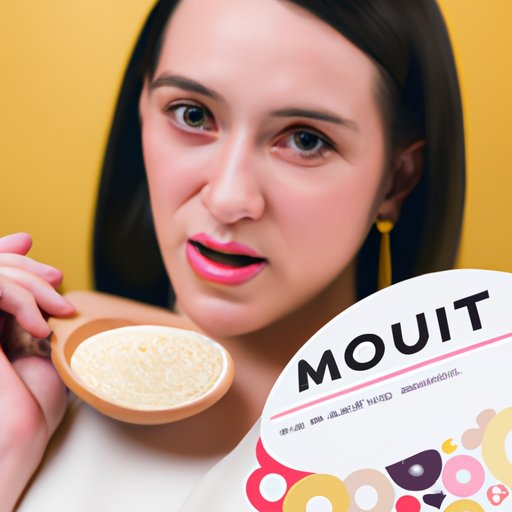
Introduction: The Rise of Gluten-Free Diets and Millet Flour
With an increasing number of people adopting gluten-free diets, finding the right flour alternative can be daunting. Millet flour, a gluten-free option, is gaining popularity, thanks to its unique nutrition profile, versatility, and flavor. In this article, we’ll explore the history and origin of millet flour, discuss its gluten-free status, and provide tips, tricks, and delicious recipes to help you cook gluten-free with millet flour.
Everything You Need to Know About Millet Flour: Is It Gluten-Free?
If you’re new to millet flour, you may wonder what it is and where it comes from. Millet flour is the result of grinding the whole grains of several different species of millet, a group of ancient cereal grains widely cultivated in Asia and Africa. This whole-grain flour has a slightly sweet and nutty flavor and a texture similar to that of cornmeal.
Gluten is a protein found in grains like wheat, barley, and rye, which gives baked goods their structure and elasticity. For people with celiac disease or gluten sensitivity, consuming gluten can trigger an immune response, leading to digestive issues, nutrient deficiencies, and other health problems.
Millet flour, fortunately, is a gluten-free option. According to the U.S. Food and Drug Administration (FDA), a product can be labeled as gluten-free if it contains less than 20 parts per million (ppm) of gluten, the amount considered safe for most people with celiac disease. Millet flour contains no gluten proteins, making it a safe option for those on a gluten-free diet.
However, it’s worth noting that millet may be processed in facilities that also handle gluten-containing grains, which can lead to cross-contamination. To minimize the risk of cross-contamination, choose certified gluten-free millet flour or look for millet flour that is packaged in dedicated gluten-free facilities.
Gluten-free Cooking Made Easy with Millet Flour
Millet flour can be substituted for wheat flour in many recipes, making it a versatile option for gluten-free cooking. It can be used to make gluten-free bread, cakes, pancakes, waffles, and more. However, baking with millet flour requires some adjustments as it behaves differently than wheat flour.
Here are some tips for using millet flour in various recipes:
- Combine millet flour with other gluten-free flours like rice flour, almond flour, or tapioca starch to improve texture and flavor.
- Add xanthan gum or ground flaxseed to help bind the ingredients together and provide elasticity.
- Millet flour has a slightly sweet and nutty flavor that pairs well with fruits, nuts, and spices like cinnamon and ginger.
- When baking with millet flour, preheat the oven to a higher temperature than you would with wheat flour, as millet flour tends to absorb more liquid and takes longer to cook.
Substituting wheat flour for millet flour can be a challenge, as wheat flour is a more reliable source of gluten, which gives baked goods their structure. However, with some tweaks and experimentation, millet flour can be a great substitute for wheat flour.
Understanding the Benefits and Limitations of Millet Flour for a Gluten-free Diet
One of the main benefits of millet flour is its nutritional profile. It’s high in protein, fiber, vitamins, and minerals, making it a healthy addition to a gluten-free diet. It contains more iron, magnesium, and phosphorus than wheat flour, as well as antioxidants that protect the body from oxidative stress.
However, millet flour has some limitations in baking and cooking. Its texture is coarser than that of wheat flour, which can lead to drier or denser baked goods. Its nutty flavor may also not be suitable for all recipes.
Millet Flour vs. Wheat Flour: A Gluten-free Baking Comparison
While millet flour has its limitations, it also has some significant benefits over wheat flour. Baked goods made with millet flour tend to be lighter, fluffier, and more delicate than those made with wheat flour. Millet flour creates a unique texture that can be especially suitable for gluten-free bread and cakes.
Here are some recipes that showcase the differences between millet flour and wheat flour:
- Gluten-Free Bread: A loaf made with millet flour and gluten-free oats has a soft, fluffy texture and a slightly nutty flavor.
- Gluten-Free Pancakes: Millet flour creates light and airy pancakes that are perfect for a weekend brunch.
- Gluten-Free Cake: A cake made with millet flour has a tender crumb and a delicate sweetness that pairs perfectly with fresh fruit.
Millet Flour Recipes for a Delicious and Gluten-free Meal
Now that you know how to cook gluten-free with millet flour let’s explore some delicious, gluten-free recipes that use millet flour:
- Breakfast: Gluten-Free Blueberry Millet Pancakes are light and fluffy, bursting with sweet blueberries and topped with syrup.
- Lunch: Gluten-Free Millet Flatbread paired with your favorite hummus or vegetable dip is perfect for a light lunch or snack.
- Dinner: Gluten-Free Millet and Vegetable Casserole is a hearty, flavorful dinner that’s also packed with nutrients.
- Dessert: Gluten-Free Millet and Almond Cake with Lemon Glaze is a delicate, nutty cake with a tangy lemon glaze that’s perfect for a special occasion or a midday treat.
Conclusion
Millet flour is a nutritious, gluten-free option for baking and cooking. With its unique texture and flavor, it can open up new avenues for gluten-free cooking. While it has some limitations, with some experimentation and creativity, you can make delicious baked goods and meals with millet flour that are both healthy and satisfying.
Remember to look for certified gluten-free millet flour or purchase from dedicated gluten-free facilities to minimize the risk of cross-contamination. And don’t be afraid to start experimenting in the kitchen to see how millet flour can enhance your gluten-free diet.




